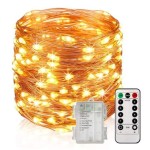Easy Care Plants For Outdoor Pots
Container gardening offers a versatile and accessible way to cultivate greenery, even in limited spaces such as balconies, patios, and decks. Choosing the right plants is crucial for success, especially for individuals seeking low-maintenance options that thrive outdoors in pots. The following information outlines various easy-care plants well-suited for outdoor containers, focusing on their specific needs and providing guidance on their cultivation.
Succulents and Cacti: Drought-Tolerant Choices
Succulents and cacti are renowned for their ability to store water in their leaves, stems, and roots, making them exceptionally drought-tolerant. This characteristic makes them ideal choices for container gardening, particularly in regions with hot, dry climates or for individuals who tend to forget regular watering. These plants come in a vast array of shapes, sizes, and colors, offering diverse landscaping possibilities.
Specific examples of easy-care succulents and cacti for outdoor pots include: Sedum (Stonecrop), Echeveria, Sempervivum (Hens and Chicks), Aloe, and various types of cacti such as Opuntia (Prickly Pear) and Echinopsis (Sea Urchin Cactus). These plants are generally tolerant of full sun exposure, although some varieties may benefit from afternoon shade in extremely hot climates.
Cultivation requirements for succulents and cacti are relatively simple. They require well-draining soil, typically a specialized succulent or cactus potting mix. This type of mix prevents waterlogging, which can lead to root rot. Watering should be infrequent, only when the soil is completely dry to the touch. During the winter months, watering should be reduced even further, as the plants enter a period of dormancy. Fertilizing is not typically necessary, but a diluted fertilizer formulated for succulents and cacti can be applied sparingly during the growing season (spring and summer).
Proper drainage is paramount for the health of succulents and cacti grown in containers. The pot should have drainage holes to allow excess water to escape. A layer of gravel or small stones at the bottom of the pot can further improve drainage. Overwatering is a common mistake that can lead to the demise of these plants.
Ornamental Grasses: Adding Texture and Movement
Ornamental grasses provide visual interest through their varied textures, colors, and graceful movement in the breeze. They are relatively low-maintenance and can adapt to a range of growing conditions, making them suitable for outdoor container gardens. Many varieties are also drought-tolerant once established.
Popular choices for container planting include: Festuca glauca (Blue Fescue), Pennisetum setaceum (Purple Fountain Grass) - although this may be invasive in some areas, so consider its impact before planting, Calamagrostis x acutiflora 'Karl Foerster' (Feather Reed Grass), and Carex (Sedge Grass). These grasses offer a variety of heights, colors, and textures, allowing for creative combinations in container arrangements.
Ornamental grasses generally thrive in full sun but can tolerate partial shade. They prefer well-draining soil, but are adaptable to a range of soil types. Regular watering is important during the establishment phase, but once established, they are relatively drought-tolerant. Pruning is typically done in late winter or early spring to remove dead foliage and encourage new growth. This involves cutting back the grass to a few inches above the ground.
When planting ornamental grasses in containers, ensure the pot is large enough to accommodate the root system. A wider pot is generally preferable to a taller one, as grasses tend to spread outwards. Consider the mature size of the grass when selecting a container, as some varieties can become quite large. Fertilizer is generally not necessary, but a light application of slow-release fertilizer in the spring can promote healthy growth.
Geraniums (Pelargoniums): Classic and Colorful
Geraniums, specifically Pelargoniums, are known for their vibrant flowers and relatively easy care requirements. They are a popular choice for container gardening, providing continuous blooms throughout the growing season. They are available in a wide range of colors, including red, pink, white, and purple.
There are several types of geraniums suitable for outdoor pots, including: Zonal Geraniums (Pelargonium x hortorum), Ivy Geraniums (Pelargonium peltatum), and Scented Geraniums (Pelargonium spp.). Zonal geraniums are upright and bushy, while ivy geraniums have trailing stems, making them ideal for hanging baskets. Scented geraniums are prized for their fragrant leaves, which release different scents when touched, such as lemon, rose, or mint.
Geraniums thrive in full sun, requiring at least six hours of direct sunlight per day. They prefer well-draining soil and regular watering, but avoid overwatering, which can lead to root rot. Allow the soil to dry slightly between waterings. Deadheading, the removal of spent flowers, is essential for promoting continuous blooming. This encourages the plant to produce new flowers rather than focusing energy on seed production.
Fertilizing geraniums regularly during the growing season is important. Use a balanced fertilizer formulated for flowering plants, following the instructions on the label. Geraniums are not typically cold-hardy and need to be brought indoors or protected during the winter months in regions with freezing temperatures. They can be overwintered indoors in a bright, cool location, with reduced watering.
Lavender (Lavandula): Fragrant and Drought-Tolerant
Lavender is a fragrant herb beloved for its beautiful purple flowers and calming scent. It is relatively low-maintenance and drought-tolerant once established, making it a good choice for outdoor containers. Lavender attracts pollinators such as bees and butterflies, adding to the ecological value of the garden.
Popular varieties for container planting include: Lavandula angustifolia (English Lavender), Lavandula x intermedia (Lavandin), and Lavandula stoechas (Spanish Lavender). English lavender is known for its classic lavender scent and is relatively cold-hardy. Lavandin is a hybrid with larger flowers and a stronger scent. Spanish lavender is distinguished by its distinctive "ears" or bracts at the top of the flower spikes.
Lavender requires full sun and well-draining soil. It is susceptible to root rot if the soil remains too wet. Therefore, it is essential to use a well-draining potting mix and avoid overwatering. Pruning is important for maintaining the shape of the plant and encouraging bushier growth. Prune lavender after flowering, removing spent flower spikes and trimming back the plant by about one-third. Avoid cutting back into the woody stems, as this can hinder regrowth.
Lavender is relatively drought-tolerant once established and prefers infrequent watering. Allow the soil to dry out completely between waterings. Fertilizing is generally not necessary, but a light application of bone meal or a fertilizer formulated for flowering plants can be applied in the spring. Lavender is generally hardy in USDA zones 5-9, but some varieties may require winter protection in colder climates.
Petunias: Prolific Bloomers
Petunias are known for their profusion of colorful blooms throughout the growing season. They are a popular choice for hanging baskets and containers, adding a vibrant splash of color to outdoor spaces. With proper care, they can provide continuous flowers from spring until frost.
There are various types of petunias, including: Grandiflora Petunias (large flowers), Multiflora Petunias (smaller, more numerous flowers), and Wave Petunias (spreading, trailing habit). Wave petunias are particularly well-suited for containers, as they cascade over the edges, creating a stunning display.
Petunias thrive in full sun, requiring at least six hours of direct sunlight per day. They prefer well-draining soil and regular watering. Avoid allowing the soil to dry out completely, as this can stress the plants and reduce flowering. Frequent fertilization is essential for maintaining a steady supply of blooms. Use a balanced fertilizer formulated for flowering plants, following the instructions on the label. Deadheading spent flowers is also important for encouraging continuous blooming. Pinch off the faded flowers just below the flower head.
Petunias can be susceptible to certain pests and diseases, such as aphids and powdery mildew. Regularly inspect the plants for signs of infestation or disease and take appropriate action if necessary. Petunias may require some pruning during the growing season to maintain their shape and prevent them from becoming leggy. Trim back the stems to encourage bushier growth and more abundant flowering.
Dusty Miller (Senecio cineraria): Silver Foliage Accent
Dusty Miller is grown for its attractive silver-gray foliage, which provides a striking contrast to green foliage and colorful flowers. It is relatively low-maintenance and adds a touch of elegance to container gardens. While it does produce flowers, they are typically insignificant and are often removed to maintain the focus on the foliage.
There are several varieties of Dusty Miller, differing slightly in leaf shape and size. The most common variety, 'Silver Dust', has finely dissected, lacy leaves. Other varieties may have broader, more rounded leaves.
Dusty Miller thrives in full sun but can tolerate partial shade. It prefers well-draining soil and moderate watering. Avoid overwatering, as this can lead to root rot. The plant is relatively drought-tolerant once established. Pruning is generally not necessary, but you can trim back the plant to maintain its shape or remove any dead or damaged foliage. The flowers, when they appear, are typically yellow and can be removed to encourage more vigorous foliage growth.
Dusty Miller is a good choice for adding texture and contrast to container arrangements. It pairs well with a variety of flowering plants, such as petunias, geraniums, and pansies. It can also be used as a filler plant in mixed containers, providing a backdrop for more colorful plants.
Coleus (Plectranthus scutellarioides): Colorful Foliage
Coleus is prized for its vibrant and varied foliage, which comes in a wide range of colors and patterns. It is relatively easy to grow and can be used to add a splash of color to shady areas of the garden. While some varieties do produce flowers, they are typically insignificant and are often removed to encourage more vigorous foliage growth.
Coleus is available in a seemingly endless array of colors and patterns, including shades of red, pink, purple, green, yellow, and orange. Some varieties have solid-colored leaves, while others have intricate patterns of veins, stripes, or spots.
Coleus thrives in partial to full shade, as direct sunlight can scorch the leaves. It prefers moist, well-draining soil. Regular watering is important, especially during hot weather. Avoid allowing the soil to dry out completely, as this can cause the leaves to wilt. Fertilizing coleus regularly during the growing season is important for maintaining its vibrant color. Use a balanced fertilizer formulated for foliage plants, following the instructions on the label. Pinching off the flower spikes as they appear encourages more vigorous foliage growth.
Coleus is a versatile plant that can be used in a variety of ways in container gardens. It can be grown as a standalone plant in a pot or used as a filler plant in mixed containers. It pairs well with other shade-loving plants, such as impatiens, begonias, and ferns.
The successful cultivation of easy-care plants in outdoor pots relies on understanding their specific needs regarding sunlight, soil type, watering frequency, and fertilization. Selecting appropriate container sizes and ensuring proper drainage are also critical factors. By considering these elements, individuals can create thriving and visually appealing container gardens with minimal effort.

Low Maintenance Outdoor Potted Plants Pots Planters More

31 Best Low Maintenance Plants For Outdoor Pots Growing Family

The Best Plants For Amazingly Low Maintenance Garden Pots Middle Sized Gardening Blog

10 Easy Care Patio Plants For A Lush Summer Garden

Top 10 Plants For Pots And Containers Bbc Gardeners World Magazine

Full Sun Plants For Pots Garden Design

31 Best Low Maintenance Plants For Outdoor Pots And How To Take Care Of Them

The Best Plants For Amazingly Low Maintenance Garden Pots Middle Sized Gardening Blog

Brilliant Low Maintenance Plants For Beautiful Gardens The Middle Sized Garden Gardening Blog

Great Plants For Container Gardens Sunset Plant Collection








